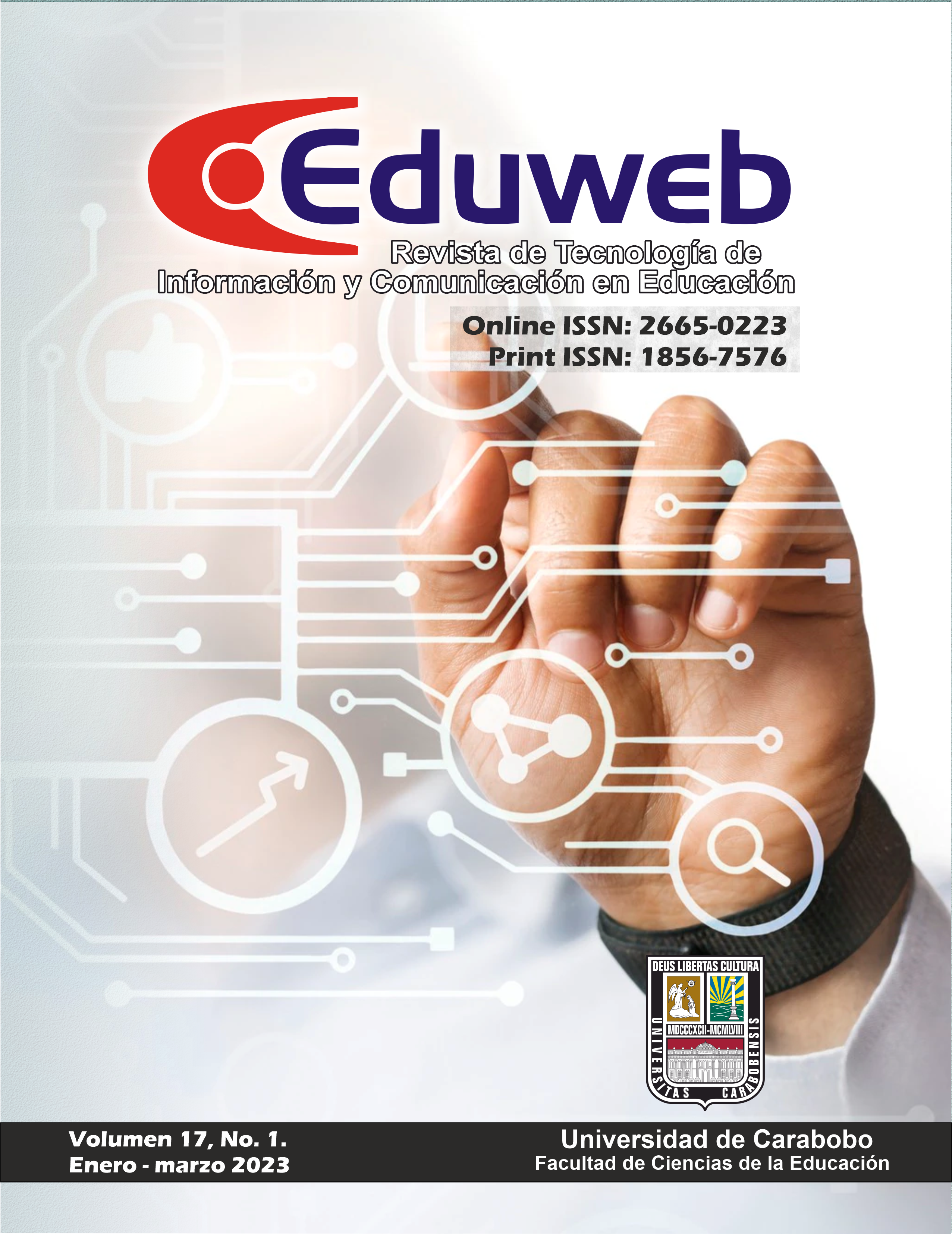Development factors and directions for improving distance learning in the higher education system of Ukraine
DOI:
https://doi.org/10.46502/issn.1856-7576/2023.17.01.5Palabras clave:
higher education, education system, distance learning, distance education.Resumen
The article reveals the trends in the development of modern education, to substantiate the social and scientific-theoretical prerequisites for distance learning, on this basis, a systematic didactic design of distance learning was carried out. It has been determined that the implementation of a system- information approach to learning will ensure the construction of a holistic, multi-level model of distance education; identification of reserves for improving the quality of education will be based on its content and procedural components; the use of the latest teaching methods and technologies will be subordinated to the task of forming the intellectual and personal spheres of the student.
Citas
Ali, K.A.G., Khalil, H.E. M., & El-Sharkawy, F.M. (2020). Impacts of Online Remote Education on the Learning Process among Nursing Students. Open Journal o fNursing, 10(9), 810-830. https://www.scirp.org/journal/paperinformation.aspx?paperid=102859
Alqahtani, A., & Rajkhan, A. (2020). E-learning critical success factors during the COVID-19 pandemic: a comprehensive analysis of E-learning managerial perspectives. Education Sciences, 10(9), 216. https://doi.org/10.3390/educsci10090216
Atieku-Boateng, H. (2021). An evaluation of the effectiveness of online education and the extent to which online education will be replacing the traditional classroom teaching. Academia Letters, 2806. https://doi.org/10.20935/AL2806
Gao, H. (2021). Analysis of Network Classroom Environment on the Learning Ability of College Students. Technology, Knowledge and Learning, 26(1). DOI: https://doi.org/10.1007/s10758-020-09457-3
Hillier, M. (2018). Bridging the digital divide with off-line e-learning. Distance Education, 39(1), 110–112. Doi: https://doi.org/10.1080/01587919.2017.1418627
Langegard, U., Kiani, K., Nielsen, S. J., & Svensson, P. A. (2021). Nursing students’ experiences of a pedagogical transition from campus learning to distance learning using digital tools. BMC Nursing, 20(1), 1–10. https://doi.org/10.1186/s12912-021-00542-1
Mohammed, M., & Ja'ashan, N. (2020). The Challenges and Prospects of Using E-learning among EFL Students in Bisha University. Arab World English Journal (AWEJ), 11(1), 124-137. https://dx.doi.org/10.24093/awej/vol11no1.11
Morin, K. H. (2020). Nursing education after COVID-19: Same or different? Journal of Clinical Nursing, 29(17–18), 3117–3119. https://doi.org/10.1111/jocn.15322
Nikadambaeva, K. B. (2020). Possibilities For Using E-Sources of Educational Methodology in Online Education During Quarantine. The American Journal of Social Science and Education Innovations, 02(08), 164–173. https://doi.org/10.37547/tajssei/Volume02Issue08-25
O'Doherty, D., Dromey, M., Lougheed, J., Hannigan, A., Last, J., & McGrath, D. (2018). Barriers and solutions to online learning in medical education -an integrative review. BMC medical education, 18(1) 130. https://doi.org/10.1186/s12909-018-1240-0
Palvia, S., Aeron, P., Gupta, P., Mahapatra, D., Parida, R., Rosner, R., & Sindhi, S. (2018). Online Education: Worldwide Status, Challenges, Trends, and Implications, Journal of Global Information Technology Management, 21(4), 233–241. Doi: https://doi.org/10.1080/1097198X.2018.1542262
Rajab, K. (2018). The Effectiveness and Potential of E-Learning in War Zones: An Empirical Comparison of Face-to-Faceand Online Education in Saudi Arabia. Institute of Electrical and Electronics Engineers, 99, 1-1. DOI: 10.1109/ACCESS.2018.2800164
Ratheeswari, K. (2018). Information communication technology in education. Journal of Applied and Advanced Research, 3(1), 45-47. DOI: https://doi.org/10.21839/jaar.2018.v3iS1.169
Riera Guasp, J., Ardid, M., Vidaurre, A., & Dueñas, J. (2018). Students’ perception of auto-scored online exams in blended assessment: Feedback for improvement. Educacion XX1, 21(2),79-83. https://doi.org/10.5944/educxx1.19559
Shehab, A., & Khalifa, M. (2021). Evaluation of the Current Challenges of Nursing Students about Online Nursing Education at the Middle Region in Iraq. Annals of the Romanian Society for Cell Biology, 25(5), 4864-4870.
Shoufan, A. (2019). Estimating the cognitive value of YouTube’s educational videos: A learning analytics approach, Computers in Human Behavior, 92, 450–458. Doi: https://doi.org/10.1016/j.chb.2018.03.036
Descargas
Publicado
Cómo citar
Número
Sección
Licencia
Derechos de autor 2023 Kateryna Kovalska, Liudmyla Ivanenko , Myroslava Fabian, Mykola Mokliuk, Oleksandr Khoroshev

Esta obra está bajo una licencia internacional Creative Commons Atribución 4.0.















